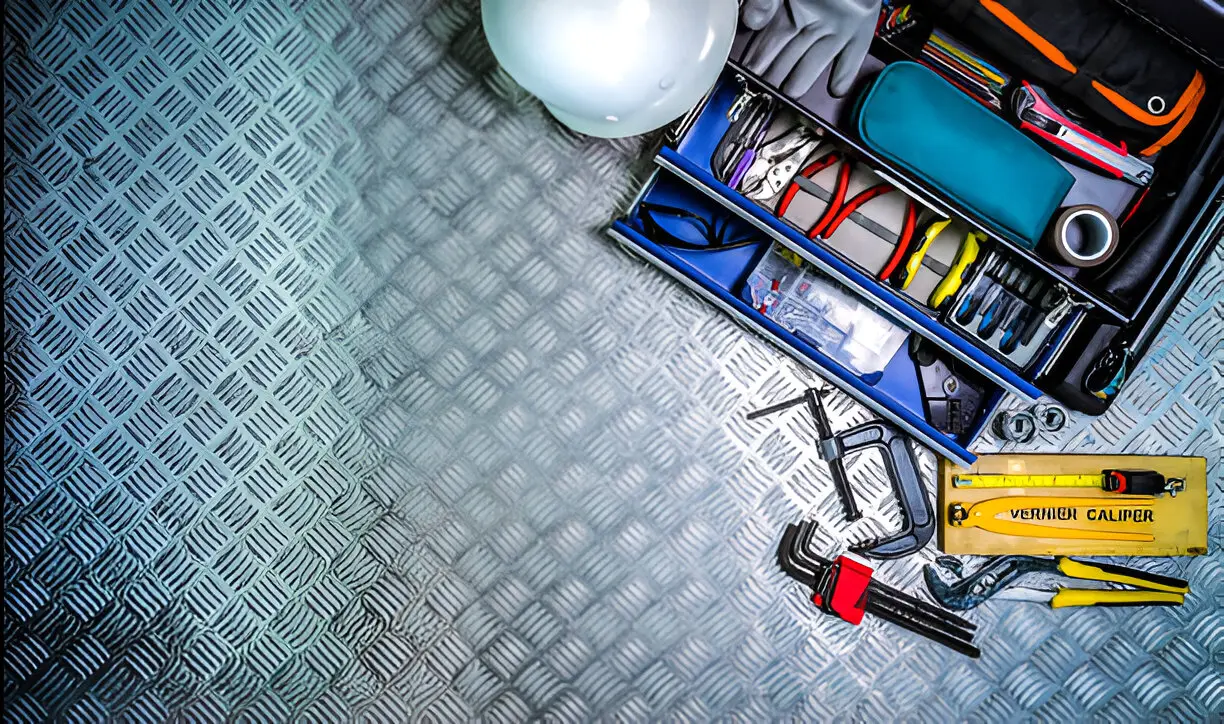For both professionals and enthusiasts, an aluminium toolbox is a significant investment. These robust and lightweight storage solutions are invaluable for organising and protecting one’s tools and equipment. Ensuring that your toolbox can withstand the test of time not only safeguards your tools but also guarantees that you maximise the investment made into these storage systems. The longevity of your aluminium tool boxes is contingent upon regular maintenance and care.
Understanding the Merits of Aluminium Toolboxes
Aluminium tool boxes stand out in the realm of storage due to their resilience to corrosion, high strength-to-weight ratio, and innate durability. These characteristics make them ideal for harsh work environments and various weather conditions, particularly for those mounted on vehicles. However, these advantages underscore the importance of ongoing maintenance to ensure they continue to offer superior protection and functionality.
Regular Cleaning
The first step in extending the life of your aluminium toolbox is to engage in habitual cleaning. Residue from tools, dust, and debris can accumulate over time, possibly leading to scratches or the development of corroded spots. It is advisable to thoroughly wash your toolbox with a mild detergent and water, ensuring that you rinse off all soap suds and dry it completely to prevent water spots and potential oxidation.
Inspect for Damage
Regular inspection of your toolbox can preempt issues before they escalate. Look for dents, scratches, or signs of strain. While aluminium is resistant to rust, it can still suffer wear and tear, which might compromise the toolbox’s watertight integrity. Early detection and prompt action to rectify such damage will extend the lifespan of your toolbox considerably.
Apply Protective Coatings
To mitigate the risk of oxidation and wear, consider applying a protective coating to your toolbox. Products such as automotive wax or specialised sealants can create a barrier against the elements. This also adds a layer of shine, enhancing the aesthetic longevity of your toolbox. However, it’s important to choose products compatible with aluminium to avoid any adverse reactions.
Inspect and Maintain Seals
The integrity of the seals around your toolbox is critical to keeping out moisture and dust, which can be detrimental to the tools inside. Inspect seals regularly and replace them when they show signs of wear or damage. A high-quality seal will prevent moisture intrusion and protect your tools from rust and other damage.
Lubricate Moving Parts
Hinges, locks, and handles require regular lubrication to function smoothly and avoid seizing up or becoming stiff. Use a suitable lubricant that is designed for use on aluminium and apply it sparingly to maintain these moving parts. Regularly tending to these areas will ensure that your toolbox operates seamlessly, offering easier access to your tools when you need them.
Tailoring Your Toolbox to Your Needs
Your toolbox should not only be maintained but also personalised to suit your specific requirements. Through the addition of various ute accessories, you can enhance the functionality and organisation within your toolbox. Drawer dividers, foam inserts, or additional racks can help in keeping everything in place and reducing wear from tools moving around.
Adjust to Weather Conditions
If your toolbox is regularly exposed to the outdoors, particularly on a ute, it is crucial to adjust your maintenance procedures according to the weather. For instance, during the winter months, more frequent cleaning and lubrication might be necessary to counteract the effects of moisture and road salt.
Mind the Weight Limit
Aluminium toolboxes are favoured for their weight efficiency, but it’s vital to respect the weight limit. Overloading your toolbox can cause structural damage and overstrain the mounting system, particularly for those fixed on vehicles. Ensure that the weight of your tools is evenly distributed and consistent with the toolbox’s design capacity.
Quality Locks and Security
Maintaining the security of your toolbox is another aspect of extending its lifespan. Using high-quality locks to safeguard your tools can prevent theft and accidental opening, which could lead to tool damage or loss. Brands like Chivalry provide reliable locking mechanisms that can be integrated into your toolbox system for enhanced security.
Proactive Replacement and Upgrades
Eventually, certain components of your toolbox may need to be replaced. Proactively upgrading worn parts or outdated accessories can rejuvenate and extend the effective life of your toolbox. This can range from switching out old handles to incorporating newer latching mechanisms that offer better durability and ease of use.
Engage with Manufacturers for Custom Solutions
If standard maintenance is not addressing your specific needs, engaging with manufacturers can provide tailored solutions. Manufacturers who specialise in custom-built aluminium toolboxes can advise on how to maintain their specific products and sometimes offer services or parts that are specifically designed for the model you own.
Conclusion
Taking proper care of your aluminium toolbox is not just a matter of aesthetics; it’s about safeguarding your investment and ensuring that your tools remain secure and accessible. Through regular cleaning, inspection, and appropriate upgrades, as well as the integration of tailored accessories, you can substantially increase the lifespan of your toolbox. Addressing issues early, adhering to maintenance schedules, and using products like Chivalry locks will contribute to the toolbox’s longevity, offering reliability and peace of mind in your professional or personal ventures.
Maintaining an aluminium toolbox is a straightforward process requiring regular attention to detail. By protecting, personalising, and proactively managing your storage solutions, your toolbox will remain a dependable asset for years to come.
Also Read- Gas Log Fires vs. Traditional Wood Heaters: What’s Best for Your Melbourne Home?








